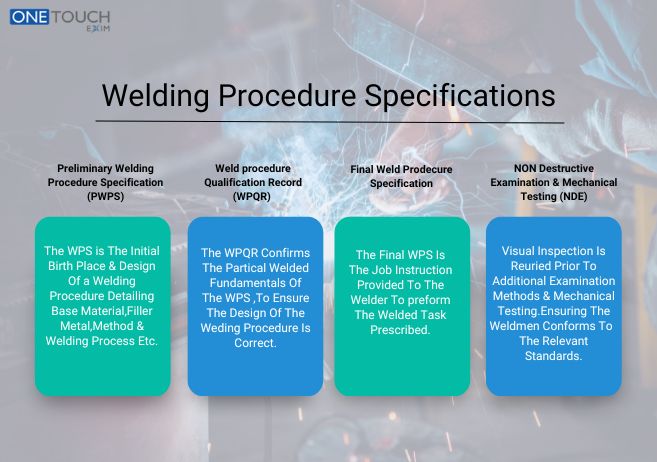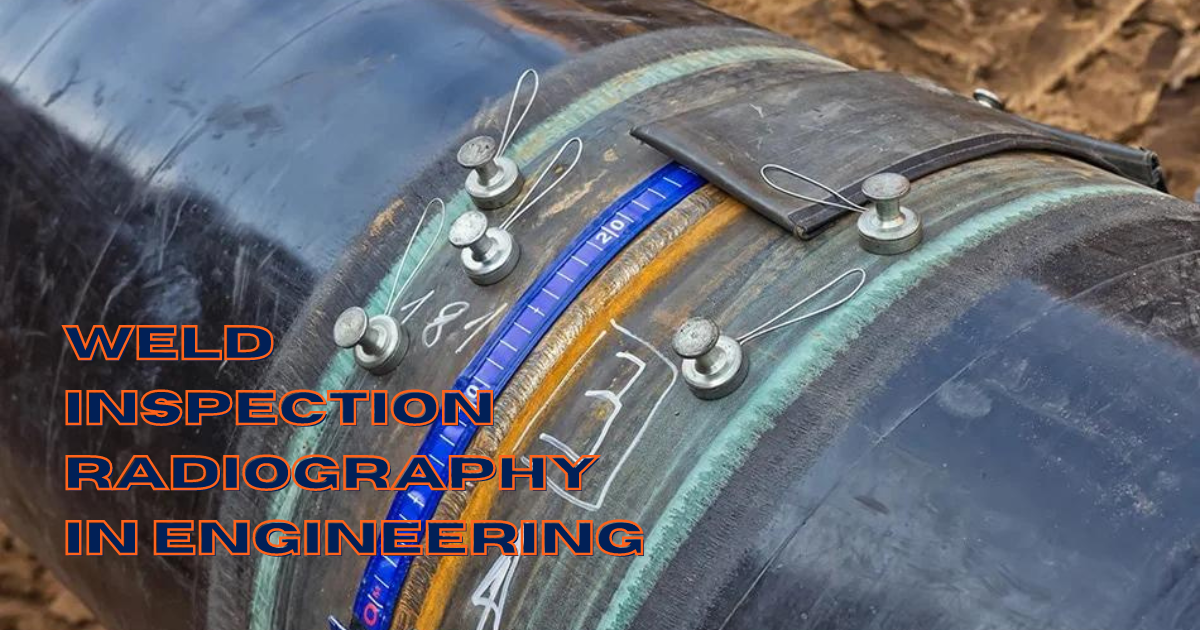Cutting-edge Methods to Fillet Weld Examination and Screening: Enhancing Weld Top Quality and Compliance Criteria
In the world of welding, the quality and stability of fillet welds play a critical function in making sure the architectural soundness and reliability of different industrial elements. With the continuous drive for boosted performance and compliance with strict requirements, the expedition of ingenious techniques to fillet weld examination and screening has actually become necessary. As sectors develop, the conventional approaches may no more be sufficient in satisfying the needs of modern-day welding applications. By accepting innovative modern technologies and methodologies, a new perspective of opportunities emerges in the world of weld quality assessment and adherence to conformity criteria.
Advanced Non-Destructive Screening Approaches
Using modern modern technologies, progressed non-destructive testing methods play an essential duty in guaranteeing the stability and high quality of fillet welds. These methods, such as phased range ultrasonic screening (PAUT) and magnetic particle screening (MPT), offer in-depth insights right into the weld's inner structure without triggering any kind of damage to the material. PAUT, as an example, makes use of multiple ultrasonic aspects to evaluate the weld from various angles, offering a thorough visualization of potential problems like absence of blend or splits.
By employing these sophisticated non-destructive screening strategies, weld assessors can properly analyze the top quality of fillet welds, ensuring compliance with sector standards and policies. The capability to identify imperfections early on not just boosts weld high quality however likewise stops pricey rework or failings in structural integrity, underlining the importance of these ingenious testing techniques in welding assessments.
Robotics and Automation in Assessment
The combination of robotics and automation has actually changed the examination procedure for fillet welds, boosting performance and precision in high quality evaluation. Robotics use exact control and repeatability in examining welds, guaranteeing consistent and reliable results. Automated systems can be set to comply with particular assessment paths, making certain detailed insurance coverage of welds and lowering the threat of human error.
Robot assessment systems geared up with innovative sensors can detect and gauge weld features with high precision, giving in-depth data for evaluation. These systems can recognize flaws such as cracks, lack of blend, and porosity, enabling punctual restorative actions to be taken. Additionally, robotics and automation permit real-time information collection and evaluation, offering prompt feedback to operators and helping with fast decision-making processes.
Additionally, the usage of robotics and automation in fillet weld examination improves total performance by reducing evaluation times and boosting assessment throughput. By simplifying the inspection process, manufacturers can ensure weld top quality and conformity criteria are met efficiently, ultimately resulting in cost savings and enhanced product quality.
Utilizing Expert System for Analysis
Synthetic intelligence plays a critical role in enhancing the efficiency and accuracy of evaluation in fillet weld examination procedures. By using the power of AI, assessors can simplify the evaluation of weld top quality and conformity requirements, causing a lot more exact and reliable outcomes. AI formulas can swiftly refine large amounts of data from weld inspections, discovering flaws or variances that may be challenging to understand the naked eye. This advanced technology enables real-time surveillance of weld top quality, permitting for instant restorative actions to be taken if any concerns are found.
Furthermore, AI systems can learn from previous examination data, continually boosting their ability to identify possible defects and discrepancies in fillet welds. This adaptive knowing capacity enhances the overall top quality control process, decreasing the chance of human error and guaranteeing that welds fulfill the required requirements. By incorporating expert system into fillet weld analysis, markets can accomplish greater degrees of performance, uniformity, and conformity in their inspection practices.
Portable Equipment for On-Site Assessment
 Enhancing field evaluation effectiveness, the fostering of mobile devices revolutionizes on-site assessment processes for fillet welds. These tools provide Our site adaptability and ease, enabling examiners to carry out thorough evaluations in numerous areas, consisting of challenging or remote atmospheres. Portable devices such as ultrasonic testing devices, magnetic particle assessment tools, and electronic radiography systems give real-time information and high-resolution imaging capabilities, enabling quick decision-making and instant feedback on weld high quality.
Enhancing field evaluation effectiveness, the fostering of mobile devices revolutionizes on-site assessment processes for fillet welds. These tools provide Our site adaptability and ease, enabling examiners to carry out thorough evaluations in numerous areas, consisting of challenging or remote atmospheres. Portable devices such as ultrasonic testing devices, magnetic particle assessment tools, and electronic radiography systems give real-time information and high-resolution imaging capabilities, enabling quick decision-making and instant feedback on weld high quality.One significant benefit of mobile tools is their capability to improve evaluation procedures, reducing downtime and boosting total efficiency. Examiners can easily transfer these tools to various task sites, eliminating the demand for moving hefty machinery or components to off-site centers. Furthermore, the portability of these devices promotes cost-effectiveness by decreasing transport expenses and increasing assessment timelines.
Additionally, using mobile tools for on-site inspection advertises proactive quality assurance procedures, as inspectors can without delay determine and address any kind of prospective welding defects or inconsistencies. By incorporating these cutting-edge technologies right into on-site evaluation techniques, welding professionals can make certain compliance with sector requirements and boost weld high quality, ultimately causing improved architectural integrity and safety and security in different welding applications.
Integration of Data Monitoring Systems
Having actually optimized on-site assessment procedures through the application of portable devices, the following phase includes the smooth integration of data monitoring systems to further improve performance and data analysis abilities in fillet weld inspection and testing. Welding Inspection Racine. By incorporating information management systems into the assessment procedure, organizations can improve information collection, storage, and analysis. This assimilation permits for real-time monitoring of weld more helpful hints high quality, instant recognition of defects, and timely decision-making to rectify any kind of issues that may occur throughout the inspection process
The integration of information administration systems enables smooth interaction between different stakeholders involved in the examination procedure, fostering cooperation and improving general quality control procedures. Inevitably, the integration of information monitoring systems offers to elevate the standards of fillet his response weld inspection and screening, guaranteeing conformity with industry laws and improving weld high quality.
Verdict
Finally, innovative approaches to fillet weld assessment and testing have actually considerably improved weld top quality and compliance requirements. Advanced non-destructive screening approaches, robotics, automation, expert system, mobile devices, and information management systems have reinvented the means weld inspections are carried out. By utilizing these modern technologies, sectors can ensure that welds meet the needed high quality criteria and laws, ultimately improving overall effectiveness and security in welding procedures.

By employing these advanced non-destructive testing methods, weld examiners can precisely analyze the top quality of fillet welds, ensuring conformity with sector criteria and laws. Portable tools such as ultrasonic screening devices, magnetic bit evaluation devices, and digital radiography systems supply real-time data and high-resolution imaging abilities, allowing quick decision-making and instant comments on weld high quality.
Having optimized on-site evaluation processes through the usage of portable devices, the next phase involves the smooth assimilation of data management systems to even more improve effectiveness and data analysis capabilities in fillet weld evaluation and testing (Welding Inspection Racine). Eventually, the combination of information monitoring systems offers to boost the criteria of fillet weld examination and screening, making sure conformity with sector laws and enhancing weld top quality
 In verdict, innovative methods to fillet weld assessment and screening have considerably improved weld top quality and compliance standards.
In verdict, innovative methods to fillet weld assessment and screening have considerably improved weld top quality and compliance standards.